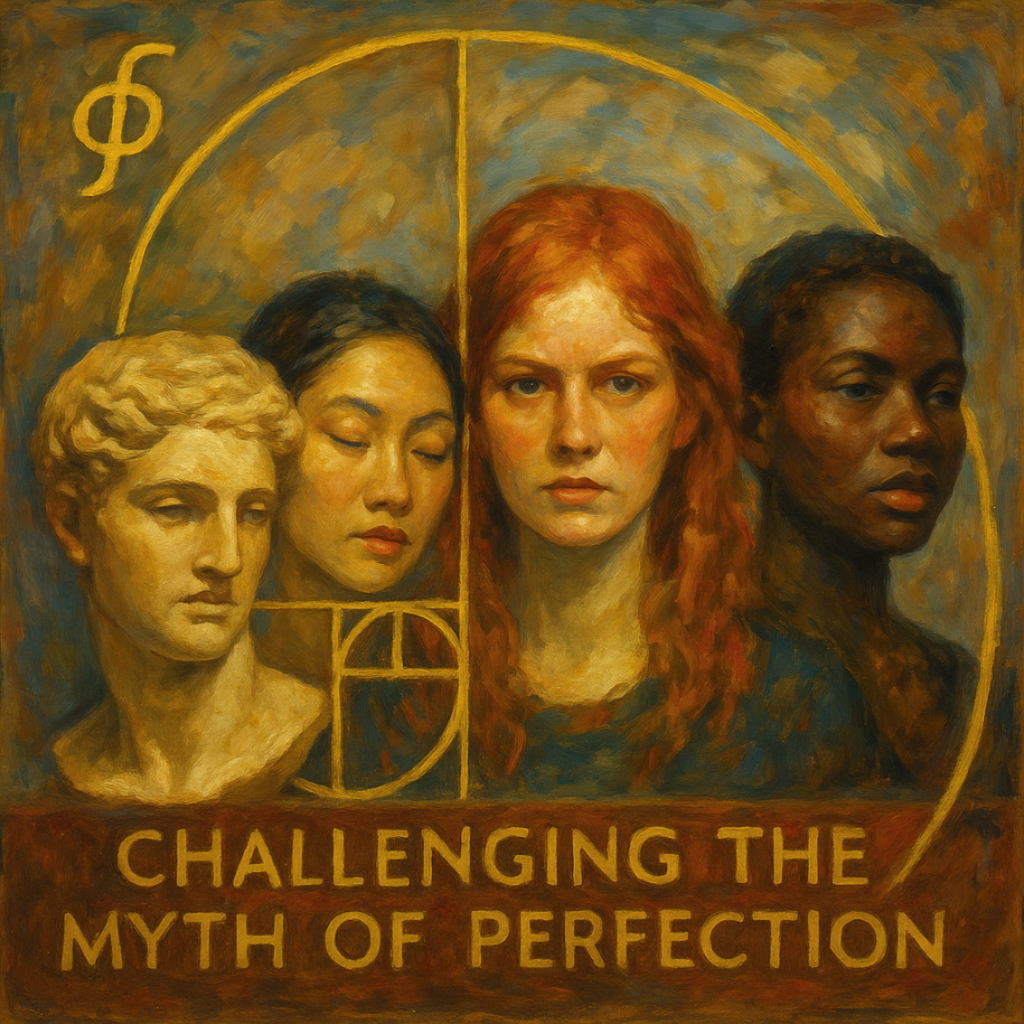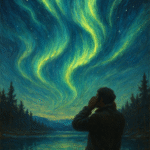The Golden Ratio and its Association with Beauty
The Golden Ratio, often denoted by the Greek letter phi (φ), is a mathematical ratio approximately equal to 1.618. For centuries, it has intrigued artists, architects, and mathematicians alike, appealing to a fundamental human desire for harmony and aesthetic pleasure. The ancient Greeks discovered that this ratio frequently appears in nature, art, and design, leading to its deep-rooted association with beauty. Famous works, from the Parthenon to da Vinci’s Vitruvian Man, embody this ratio, suggesting that it can serve as a guide to creating visually appealing compositions.
However, the belief in the Golden Ratio as a universal standard of beauty warrants scrutiny. While it holds historical significance and a profound legacy in certain artistic circles, this analysis aims to challenge the notion that beauty is solely dictated by mathematical precision. Instead, we explore how perceptions of beauty are subjective, multifaceted, and influenced by cultural contexts.
Historical Significance of the Golden Ratio in Art and Nature
Historically, the Golden Ratio has been revered for its aesthetic properties. Ancient Egyptians employed this ratio in the design of pyramids, while Renaissance artists embraced it as a formula for achieving balance, order, and beauty. Leon Battista Alberti, a prominent figure of the Renaissance, advocated for the use of the Golden Ratio in proportioning human figures and architectural elements, reflecting a broader quest for harmony and perfection in art.
In nature, the Golden Ratio manifests itself in various forms, from the spiral of seashells to the arrangement of leaves on a stem. This prevalence has led some to assert that the Golden Ratio underlies the beauty of the natural world, positioning it as a standard for human design and artistic expression. However, reliance on this mathematical framework can overlook the diversity of beauty found in disruptive forms that challenge traditional ideals.
Visual Examples of Art and Design Using the Golden Ratio
- The Parthenon: As a symbol of ancient Greece, its façade is aligned with the proportions of the Golden Ratio, which is believed to create a sense of balance and harmony.
- Leonardo da Vinci’s Works: Da Vinci’s fascination with human anatomy led him to employ the Golden Ratio to create proportionate bodies in paintings like The Last Supper and Mona Lisa.
- Salvador Dalí’s The Sacrament of the Last Supper: Dalí incorporated a dodecahedron, aligning its dimensions with the Golden Ratio, showcasing how modern interpretations can still adhere to ancient principles.
These iconic examples demonstrate how the Golden Ratio has been applied as a guideline, creating a historical narrative that intertwines aesthetics and mathematics. Yet, can these mathematical underpinnings genuinely encapsulate the complex nature of beauty?
Case Studies of Beauty That Defy the Golden Ratio
Despite the rich legacy of the Golden Ratio, several case studies reveal aesthetic expressions that dismiss or contradict its guidelines, presenting beauty in forms that resist traditional mathematical orders.
1. Richard Serra’s Tilted Arc
Installed in 1981, Richard Serra’s Tilted Arc was a monumental piece of public art that faced backlash due to its disruption of the space it occupied. A stark contrast to mathematically pleasing forms, this massive steel arc challenged viewers not only spatially but also conceptually. The artwork’s strength lay in its ability to evoke emotional responses through its imposing presence, defying the search for beauty through the Golden Ratio.
2. Frida Kahlo’s Self-Portraits
Frida Kahlo, known for her raw and intensely personal self-portraits, often utilized distorted perspectives and colors that fall outside traditional aesthetic norms. Kahlo’s work exemplifies the beauty of imperfection, illuminating personal suffering and identity, transcending strict adherence to harmonious proportions.
3. Vincent van Gogh’s Starry Night
In Starry Night, van Gogh expressed movement and emotion through swirling skies and vivid colors. This painting defies the notion of beauty tied to symmetry and order, instead portraying an emotional landscape that resonates on a personal and subconscious level. The chaotic energy captured in this work is profound, demonstrating that beauty can emerge from disorder and turbulence.
4. Modern Art Movements
Many modern art movements—such as Abstract Expressionism and Dada—actively reject the principles of classical aesthetics, including the Golden Ratio. Artists like Jackson Pollock or Marcel Duchamp liberated beauty from mathematical constraints, allowing for personal expression and experiential engagements that transcend strict aesthetic formulas.
Discussion of Philosophical Perspectives on Beauty and Perception
Subjective vs. Objective Beauty
Beauty’s nature has been philosophically debated for centuries. The relationship between the Golden Ratio and beauty often channels tensions between objective and subjective perspectives. Objective theories of beauty imply that certain features—like symmetry and proportion—universally evoke pleasure, claiming that beauty exists independently of human perception. Conversely, subjective theories suggest that beauty is a product of individual perception, shaped by cultural, social, and situational contexts.
Edmund Burke, an 18th-century philosopher, famously distinguished between the beautiful and the sublime, arguing that beauty is marked by harmony and proportionality, while the sublime is defined by chaos and intensity. This distinction reveals that beauty is not merely a metric of mathematical perfection; it exists in the interplay of human emotion and the environment.
Philosophical Quotes Supporting Alternative Views on Beauty
- Immanuel Kant: “Beauty is not a property of objects. It is a judgment or opinion of the perceiver.” This assertion emphasizes the subjective nature of beauty, reinforcing that various cultural backgrounds and personal experiences fundamentally influence perceptions.
- Friedrich Nietzsche: “The essence of all beautiful art, all great art, is gratitude.” This perspective suggests that beauty is often interwoven with emotional depth and appreciation for existence rather than confined by proportional limitations.
The Role of Culture in Shaping Beauty Standards
Cultural perceptions play a critical role in defining beauty standards, instilling a belief system that varies significantly across different societies and eras. In Western culture, past ideals have celebrated the Golden Ratio, attributing a sense of divinity to its mathematical properties. However, cultural movements such as feminism or postmodernism have propelled discussions around beauty concerning identity, individuality, and diversity. Today, beauty standards signify a broader spectrum, incorporating an assortment of ethnicities, body types, and personalities, contradicting the monolithic approach implied by the Golden Ratio.
Practical Implications
Embracing the complexity of beauty beyond the Golden Ratio facilitates a more inclusive understanding of aesthetic value. Artistic expression thrives in diversity, offering insights into human emotion and condition that a strict mathematical construct simply cannot capture. For artists and art appreciators alike, this acknowledgment fosters a deeper engagement with art that transcends preconceived notions of beauty.
Conclusion
The Golden Ratio, while historically significant and widely perceived as a marker of beauty, does not universally dictate aesthetic value. Through case studies in art and nature that defy its principles and a philosophical examination questioning its objective validity, it becomes clear that beauty is an intricate interplay between subjective perception and cultural context.
Challenging the myth of perfection pushes us toward appreciating beauty in its myriad forms, whether asymmetrical, chaotic, or deeply personal. As society progresses, embracing a more expansive view of beauty fosters creativity, diversity, and understanding among individuals, emphasizing that true beauty often lies outside rigid parameters and within the complexities of human experience.
FAQ Section
1. What is the Golden Ratio?
The Golden Ratio is a mathematical ratio approximately equal to 1.618, often represented by the Greek letter phi (φ). It appears frequently in nature, art, and design, traditionally associated with aesthetics and perceived beauty due to its balanced proportions.
2. Why is the Golden Ratio considered significant in art?
The Golden Ratio has been used as a guideline for creating aesthetically pleasing compositions. It has historically been applied in various artworks to achieve balance and harmony, leading many to associate it with the ideal of beauty throughout different art movements.
3. Are there notable artworks that do not conform to the Golden Ratio?
Yes, numerous artists have deviated from traditional proportional systems. For example, Frida Kahlo’s emotionally driven portraits and Vincent van Gogh’s expressive brushwork defy strict adherence to the Golden Ratio, instead emphasizing personal narrative and heightened emotional states.
4. How does culture influence perceptions of beauty?
Cultural backgrounds significantly shape beauty standards, creating diverse interpretations and ideals across societies. Historical contexts, media representations, and social movements impact contemporary views on beauty, expanding the definition beyond classical notions tied to mathematical proportions.
5. Can beauty exist without the Golden Ratio?
Absolutely. Beauty can manifest in various forms, including chaos, asymmetry, and personal expression. Our ability to appreciate beauty is subjective and influenced by personal experiences, emotions, and cultural contexts, which can be equally compelling despite detaching from mathematical frameworks like the Golden Ratio.


